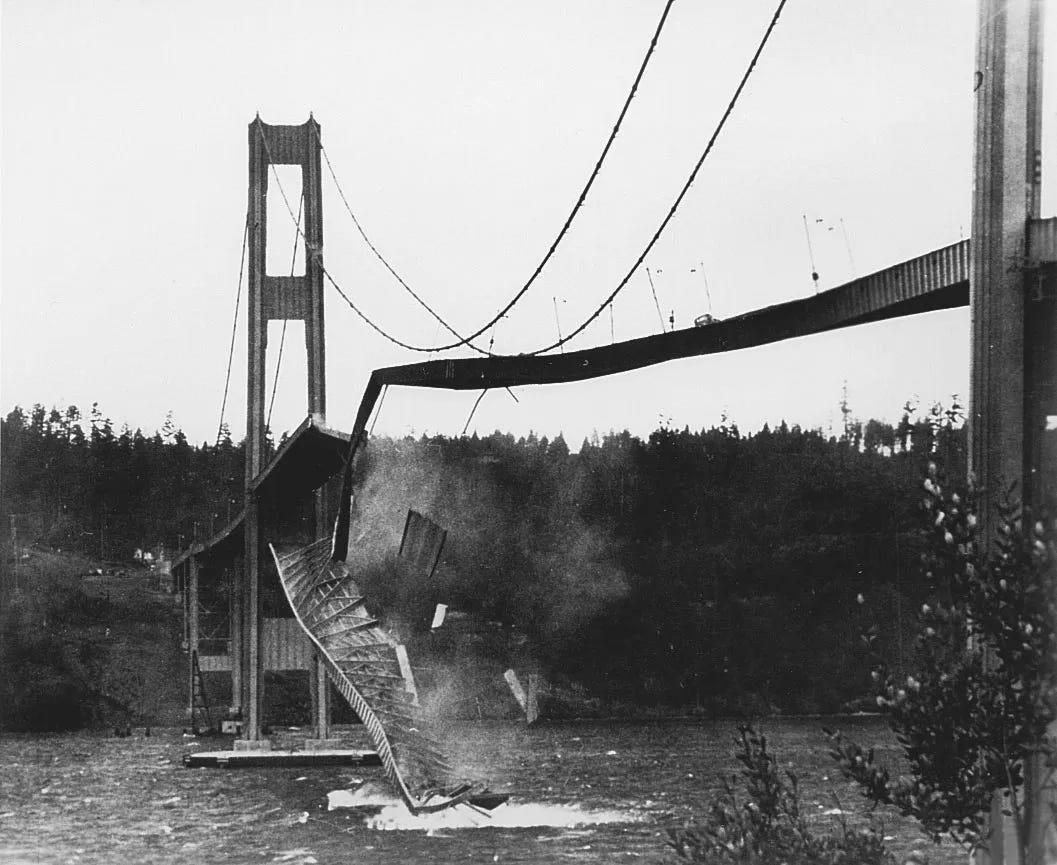Crossing the Ohio River on I75 between Ohio and Kentucky is a harrowing experience.
When I sat in the car’s back seat as a child, I teased my mom about her reaction to it. But that all changed when I drove across it for the first time, I clutched the steering wheel, my eyes fixed on the road in front of me to avoid looking over the side.
Bridges are incredible feats of engineering genius – hundreds of tons of stone or steel defying the demands of gravity and taking into account every detail: the wind speed, the soil, the topography, their intended load, etc.
They’re incredible, at least if everything goes well.
But things did not go well in the Tacoma Narrows in Washington state on November 7, 1940.
Located forty miles south of Seattle, the narrows are about a mile wide, separating the Kitsap Peninsula from Tacoma. Opened to traffic on July 1, 1940, the Tacoma Narrows Bridge was the third-longest suspension bridge in the world at that time, spanning 5,959 feet.
Its engineer, Leon Moinsseiff, designed it to be sleek, flexible, and fit within the state’s budget constraints. Even though it exceeded the standard ratios of length, depth, and width, most engineers believed it safe.
During construction, high winds made the roadway sway up and down vertically, and construction workers nick-named it “Galloping Gertie.” Engineers tried to dampen the effect of the wind but to no avail.
The morning of November 7 dawned with sustained forty-mile-per-hour winds. The bridge buckled, twisting back and forth violently, dancing like a rag doll in the wind, before finally ripping itself apart – the roadway plummeting into Puget Sound.
Fortunately, no one was injured, and we have spectacular videos of the collapse. Today, the ruins are still at the bottom of Puget Sound, where they’ve formed an artificial reef.
It turned out that sustained winds over thirty-five miles caused the bridge to vibrate with increasing severity, eventually leading to its inevitable collapse. It’s become a textbook example of the importance of aerodynamics and its effects. And, of course, bridge designs are mandatorily subject to wind tunnels today.
When I cross bridges today, I remind myself that we’ve learned from experiences like the Tacoma Narrows Bridge.
But perhaps I’m a lost cause – because I don’t grip the steering wheel any less tightly.





Went and looked up the video. An inspiration to every bridge engineer ever since on what doesn’t work.
I grip the steering wheel over that bridge too! Interesting article!!